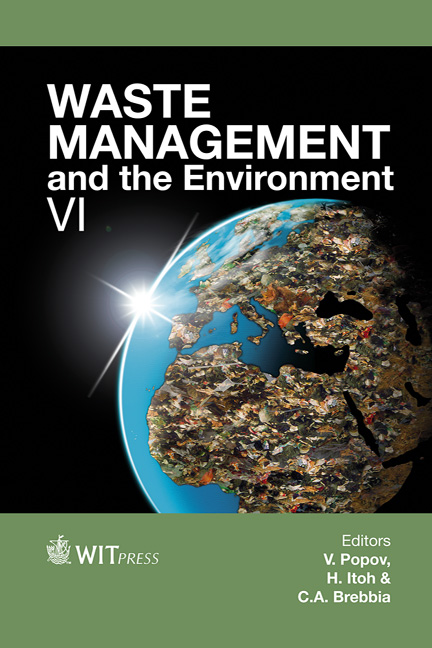Characterisation Of Chromium-Copper- Arsenic (CCA) Treated Wood Waste From A Steel-making Environment
Price
Free (open access)
Transaction
Volume
163
Pages
12
Page Range
271 - 282
Published
2012
Size
822 kb
Paper DOI
10.2495/WM120251
Copyright
WIT Press
Author(s)
S. Raghuyal, J. Steer, A. Griffiths & A. Hopkins
Abstract
Copper Chromium Arsenic (CCA) treated wood is used in the construction of coke oven quenching towers in integrated steel-plants and many other industrial applications. Waste arising from such wood has been deemed as hazardous by the recent environmental regulations due to the high heavy metal content. Hence disposal of CCA wood is substantially more expensive. The aim of this paper was to characterise the waste arising from a typical 33 years old coke quenching tower and to give an evaluation for the disposal methods in accordance to current environmental regulations. During the tower demolition, different wood samples were taken from old and renovated sections as well as support beams. Elemental analysis of the wood indicated that CCA concentration ranged from 300mg/kg to 11,000mg/kg decreasing with the age of treated wood. In addition, a high iron concentration was found from 250mg/kg to 18000mg/kg, increasing with the age of treated wood. An analysis of the CCA distribution among the growth-rings of cross-sectioned support beam along the sides as well as to the core of the beam was performed. Water leaching on the CCA wood was also performed up to 1 month duration. CCA elements leached more with increase in leaching duration where arsenic was quickest to leach at 100mg/kg compared chromium being slowest at 21mg/kg for 1 hour duration. Continuous leaching and interrupted leaching tests were also performed to further characterise the leaching behaviour of the CCA wood. To complete the characterisation, SEM analysis was conducted and the results were compared against untreated wood.
Keywords
characterisation, quenching tower, chromate copper arsenate, CCA, treated wood, wood waste, hazardous waste, leaching, SEM





